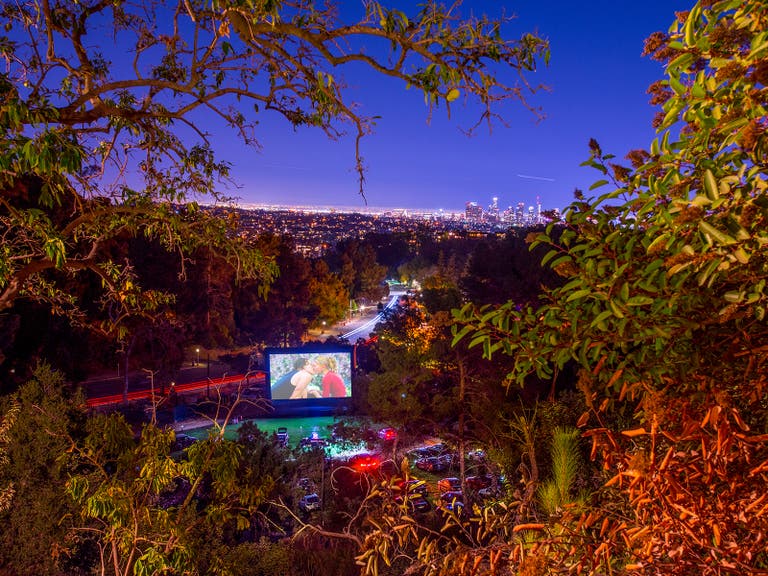Discover Oscar-Winning Best Picture Locations in Los Angeles
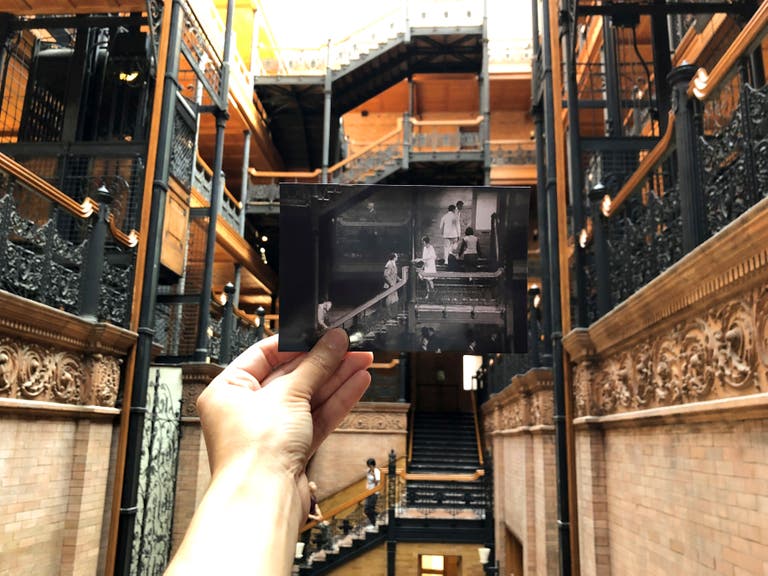
Los Angeles has been home to the Academy Awards ever since the very first ceremony was held on May 16, 1929 at the Hollywood Roosevelt Hotel. Eight Oscar trophies were handed out that night, including one to Wings for Outstanding Picture. In the 90-plus years since then, numerous Best Picture winners have filmed in LA. Read on for a list of memorable Oscar-winning movie locations that are found in the City of Angels.
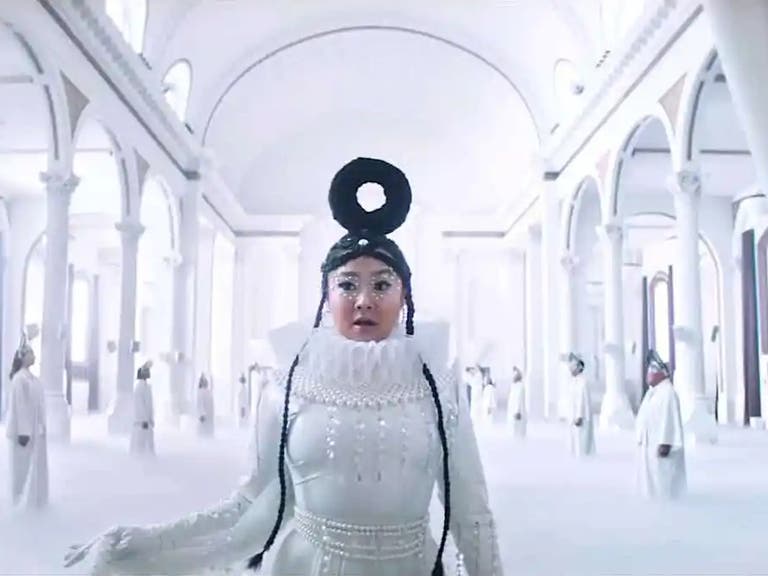
"Everything Everywhere All at Once" - Vibiana
At the 95th Academy Awards, Everything Everywhere All at Once won seven Oscars: Best Picture, Best Director (The Daniels), Best Actress (Michelle Yeoh), Best Supporting Actor (Ke Huy Quan), Best Supporting Actress (Jamie Lee Curtis), Best Original Screenplay (The Daniels) and Best Editing (Paul Rogers). Yeoh made Oscars history as the first Asian woman to win Best Actress.
Scenes with the black hole-like "Everything Bagel" - topped with literally everything - created by Jobu Tupaki (played by Stephanie Hsu) were filmed in the Main Hall at Vibiana. Located in Downtown LA, Vibiana is one of LA's most spectacular event venues. Built in 1876, the Cathedral of St. Vibiana was designed by Ezra F. Kysor - one of the city's first practicing architects. Chef Neal Fraser and Amy Knoll Fraser took over the operation of the property in 2012 and added their flagship restaurant Redbird, along with five private dining spaces in the rectory building adjacent to Vibiana’s Main Hall and Courtyard.

"The Artist" - Bradbury Building
The Artist is a 2011 French film made in the style of a black-and-white silent movie. The story takes place in Hollywood between 1927 and 1932 and focuses on the lives of silent film star George Valentin (played by Jean Dujardin), and the chorus girl he discovers, Peppy Miller (Berenice Bejo). As “talkies” start to replace silent films, George’s career fades while Peppy becomes a leading lady. At the 84th Academy Awards, The Artist made history when it took home the Oscars for Best Picture, Best Director (Michel Hazanavicius) and Best Actor (Dujardin). The Artist also won for Costume Design and Original Score.
The Artist was filmed in numerous LA locations, including the landmark Bradbury Building in Downtown LA. In a symbolic scene, George and Peppy pass each other on a staircase - he is descending the stairs and she is walking up, much like the paths of their respective movie careers. The Bradbury Building has appeared in TV episodes, music videos and movies, including the 1982 sci-fi classic Blade Runner.
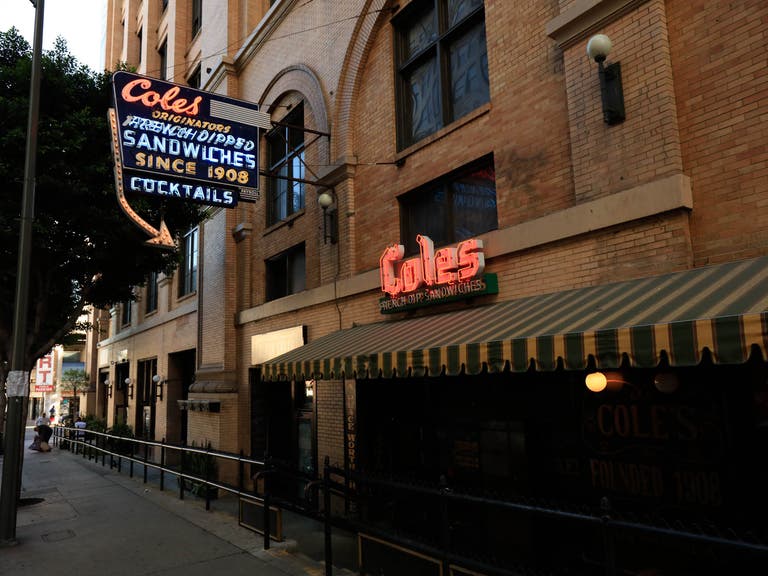
"Forrest Gump" - Cole's
In the 1994 Best Picture winner, Forrest Gump the exterior of Cole’s, LA’s oldest continuously operating bar and restaurant, served as the outside of Dick Cavett’s television studio, where Forrest Gump (Tom Hanks) experiences a less than warm reunion with Lieutenant Dan (Gary Sinise). In a later scene, the duo rings in the New Year at Cole’s and Forrest informs Dan of his plans to become a shrimp boat captain.
The historic eatery was originally established in 1908 and touts itself as the originator of the French Dip sandwich (just don’t tell that to Philippe the Original). Cole’s has been featured in countless productions over the years, including Rumor Has It, Se7en, A Lot Like Love and Jumpin’ Jack Flash. Bonus fact: Forrest learned to play ping pong and recovered from his war injuries on the second floor of the Ebell of Los Angeles in Hancock Park.
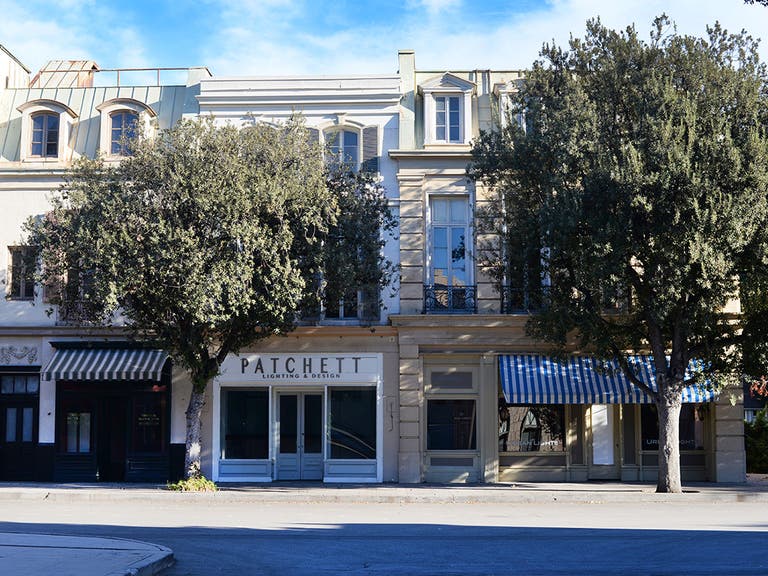
"Casablanca" - Warner Bros. Studios
The famous line from Casablanca reads, "We’ll always have Paris," but if Humphrey Bogart had said, "We’ll always have Burbank," it would have been more accurate. The Paris flashback scenes from the 1943 Best Picture winner were not actually shot in the City of Light, but on the backlot of Warner Bros. Studios in Burbank. Filming took place on the studio’s appropriately named French Street, though due to the changing nature of backlot facades, the exact spot where Ilsa Lund (Ingrid Bergman) and Rick Blaine (Bogart) learned of the impending German occupation remains a bit of a mystery. Bogie fans who wish to see French Street in person can catch a glimpse of it and even stroll among the picturesque storefronts via the Warner Bros. Studio Tour Hollywood.
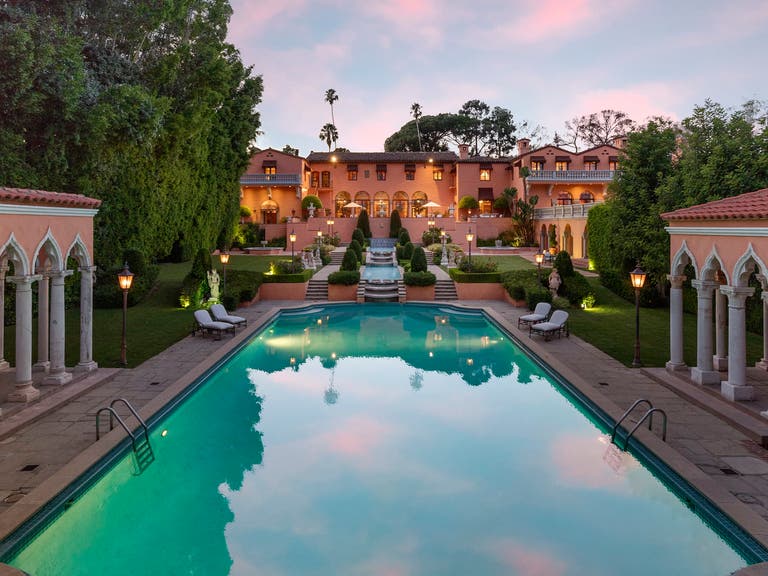
“The Godfather” - Beverly House
One of the most famous scenes from the 1972 Best Picture winner, The Godfather took place at a mansion in Beverly Hills known as the Beverly House. Designed by Gordon B. Kaufmann in 1927, the 72,000 square-foot estate was the setting when consigliere Tom Hagen (Robert Duvall) makes movie producer Jack Woltz (John Marley) "an offer he can’t refuse." Of course, that offer is declined and Woltz wakes up the following morning with the severed head of his beloved horse in his bed. Publishing magnate William Randolph Hearst spent his final years at the Beverly House, which also hosted John and Jacqueline Kennedy on their honeymoon. Only the exterior of the estate was used in the filming - interior scenes were filmed at the Guggenheim estate on Long Island.
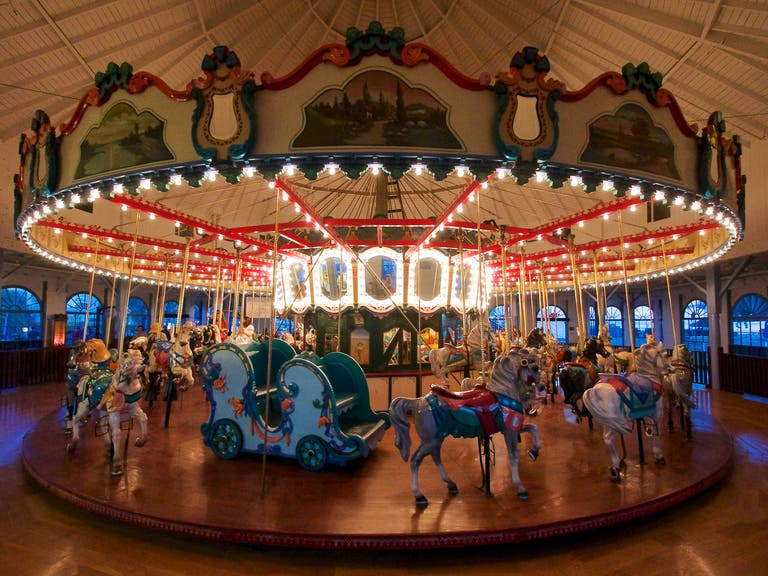
“The Sting” - Santa Monica Looff Hippodrome
Though The Sting was set in 1930s-era Chicago, the 1974 Best Picture winner was lensed largely in the City of Angels. One of the most prominent locations featured in the flick was the Santa Monica Looff Hippodrome, where grifter Henry Gondorff (Paul Newman) works with his scrappy girlfriend, Billie (Eileen Brennan). To give the carousel the illusion of being located in the Windy City, artist Albert Whitlock superimposed a matte painting of the Chicago skyline behind the two-story Moorish structure.
Located adjacent to the historic Santa Monica Pier, the Hippodrome was originally constructed in 1916 by Charles I.D. Looff and his son, Arthur, and looks much the same today as it did in The Sting. Three different merry-go-rounds have called the place home over the years. The current one, the Philadelphia Toboggan Company Carousel #62, was built in 1922 and transferred to Santa Monica in 1947.
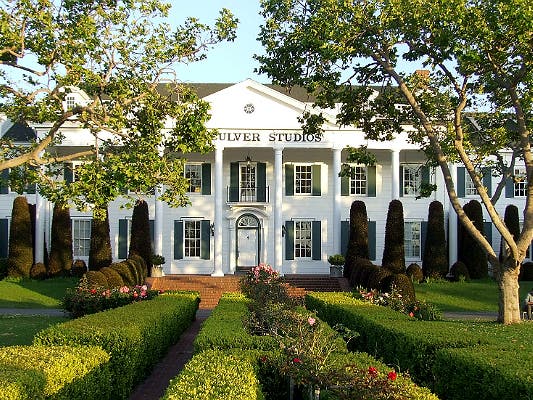
“Gone with the Wind” - The Culver Studios Mansion
The Culver Studios was originally founded in 1918 by silent film producer Thomas Ince. The first building constructed on the lot, then known as Thomas H. Ince Studios, was the Mansion, a massive 15,000 square-foot Colonial-style administration building that was modeled after George Washington’s Mount Vernon home. Producer David O. Selznick purchased the site in 1935 and renamed it Selznick International Pictures. His 1939 Best Picture winner Gone with the Wind was lensed on the premises. In the epic, the Mansion’s gate and landscaped front walkway were used as the entrance to the new Atlanta home of Rhett Butler (Clark Gable) and Scarlett O’Hara (Vivian Leigh). The Mansion’s exterior was covered with a matte painting for the shoot and looks nothing like Rhett and Scarlett’s estate. The scenes of Atlanta burning also took place on the studio’s former backlot. To create the fiery scenes, Selznick simply burned old sets, which made room for him to eventually build the Tara façade.
The Mansion and its front walkway are still standing and are clearly visible from Washington Boulevard. Amazon Studios occupies 530,000 square feet at The Culver Studios, including the company’s existing space in the historic Mansion and bungalows.
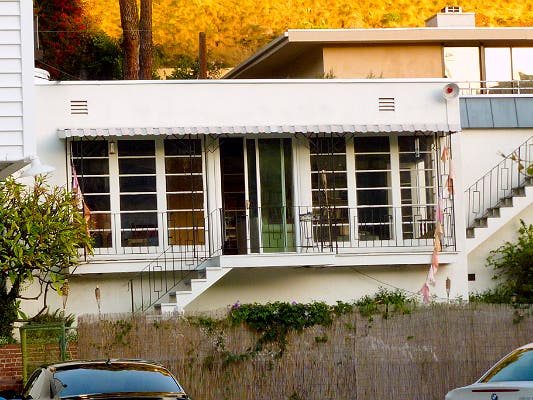
“Rain Man” - Charlie Babbitt’s Apartment
The Best Picture of 1988, Rain Man was shot on location across the U.S. A few locales are in Los Angeles, including the apartment building where Charlie Babbitt (Tom Cruise) lives. In one scene, Charlie’s autistic brother, Raymond (Dustin Hoffman, in an Oscar-winning performance), freaks out after setting off the fire alarm while cooking Eggo waffles in a convection oven. The rear side of the complex, located on Evanview Drive, is the area shown in the movie. Rain Man is not the building’s only claim to fame – a young Brad Pitt called it home at one point in the 90s.
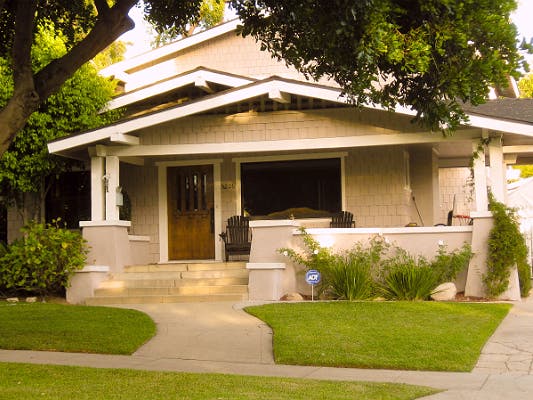
“Million Dollar Baby” - Frankie Dunn’s House
Million Dollar Baby (2004) swept the 77th Academy Awards, racking up Oscars for Best Actress (Hilary Swank), Best Supporting Actor (Morgan Freeman), Best Director (Clint Eastwood) and Best Picture. Though the film takes place in several locales across the U.S., it was filmed almost entirely in Los Angeles. The quaint bungalow where boxing trainer Frankie Dunn (Clint Eastwood) lives is located on a sleepy street in Eagle Rock. In one scene at the house, Big Willie Little (Mike Colter) fires Dunn as his coach shortly before a title fight. Dunn later watches the bout from home - Willie wins, using all of the techniques Dunn had taught him. The charming 1913 home is still very recognizable from its onscreen appearance.
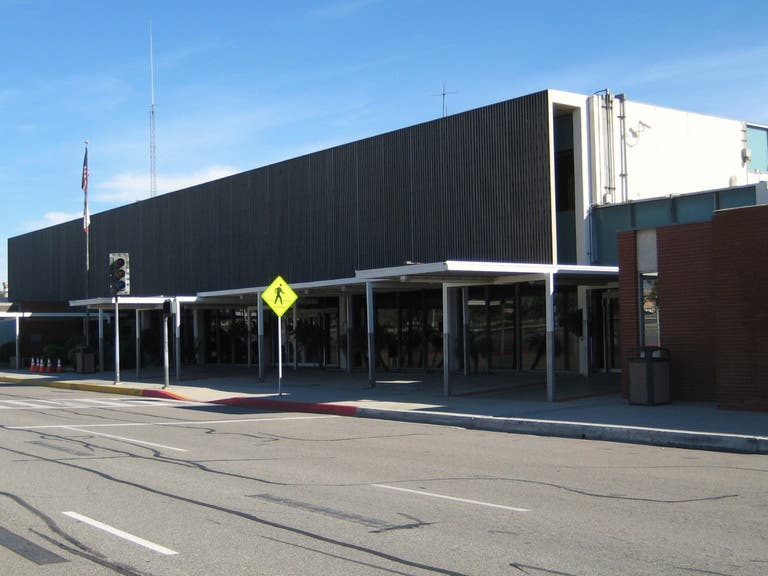
"Argo" - Ontario International Airport
Employing Farsi signage, period cards, posters of Ayatollah Khomeini and 800 Persian extras, Ben Affleck transformed Terminal 1 at Ontario International Airport into the Tehran Airport circa 1979 for the filming of his 2012 Oscar winner, Argo. Terminal 1, which is no longer in use, appeared in two of the movie’s scenes. It’s initially shown when Affleck first arrives in Tehran in order to rescue the six American Embassy workers. The terminal was later used in the movie’s nail-biting climax, when Affleck and the escapees board a plane to the U.S. under the guise of being a film crew. The Iranian mountains that appear in the background were digitally added, as was the roaring 747 that the airport security workers unsuccessfully try to chase down. Terminal 1 has also appeared in Catch Me If You Can (2002) and Blow (2001).
BONUS LOCATION: At the Smoke House Restaurant in Burbank, John Goodman advises Affleck on how to produce the fake movie that serves as cover for the rescue operation.
